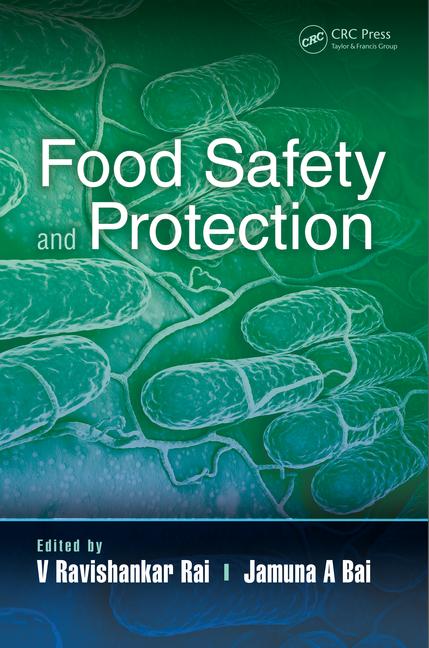Cross-connections’ Contamination Woes

In all the years I worked as a regulatory sanitarian, I cannot recall many instances where I did not find some violation of the plumbing system’s installation during my inspections, principally cross-connections of one type or another. Most were hose bib/hose connections; beverage dispensing systems, particularly at the carbonator connection; older chemical proportioning systems in ware washing and janitorial closets; scrapping-sink spray arms in the scullery; saddle-clamp connections of counter-installed drink machines, including coffee makers and point-of-use drinking-water treatment units; ice machines; and, invariably, something in the bar.
Even though these conditions are seemingly omnipresent, we can consider ourselves quite fortunate that we do not see more disease resulting from back pressure or back siphonage than we do from the lack of handwashing. This is not to say that all is well. When a waterborne outbreak occurs, it can be a real doozie, with devastating illness and catastrophic economic losses incurred by the businesses involved. The American Backflow Prevention Association (ABPA, www.abpa.org) has a long list of these documented misadventures, along with a wealth of information on their prevention. ABPA’s site is well worth a visit.
In the past two decades, I had occasion to work with attorneys on four cases involving waterborne illnesses in retail food establishments. One of these was an outbreak of Legionnaires’ disease that resulted from a poorly maintained decorative fountain in a restaurant lobby. Although this doesn’t really count as a cross-connection, nonetheless, it is an example of waterborne illness caused by other than inappropriate or poor plumbing installations. More on this issue and others like it in a future article.
The other three events could be classified under the heading of “Classic Cross- connection Follies.” They involved a back pressure from a contaminated well into a public water system; a back-siphonage condition on a building sill-cock hose connection during a repair of a water main; and a marvelous Rube Goldberg-esque direct connection of a piece of kitchen equipment to the waste line. All incidents were easily preventable and readily visible, yet were overlooked by the regulatory inspectors. All three had one thing in common: no licensed plumber was responsible. These were all homemade “improvements” to an initially compliant system; they were all done without benefit of a plumbing permit; and none had oversight upon their completion. This begs the conclusion that not all “as-builts” are “is-builts.” Collectively, we all simply have to be a bit more aware of cross-connections and far more vigilant in finding them. We need to rely on the experts to prevent cross-connections from occurring in the first place.
What Is a Cross-connection?
With my long involvement in food safety at the local level, I find that many food business owners, managers and operators of retail food establishments—of every type—and institutions with food service facilities have little, if any, knowledge of cross-connections and the risk they pose to their customers, staff and residents. Add to this that the recognition and prevention of cross-connections is not necessarily a strong suit in a sanitarian’s professional acumen. So, I thought it appropriate that a bit of Prevention 101 would be in order.
Let’s begin by defining “cross-connection.” A cross-connection is a point in a plumbing system where the potable supply may come in contact with a potential source of contamination. Cross-connections may result in backflow that causes the contaminants to enter the pure water supply under certain conditions. A backflow is a change of pressure in a water pipe that forces water to flow opposite to its intended direction, allowing contaminants to enter the unprotected system. When contaminants enter a potable water system, the odds are good that they can be distributed throughout the system and cause illness.
There are two types of backflow: back siphonage (most frequently encountered) and back pressure. A vacuum causes back siphonage, where contamination is drawn into the potable water system. The principal causes include water-line breaks, reduction of pressure in the water main, shut-downs for repair or the mere normal operation of the system. Back pressure occurs when downstream pressure is greater than the potable water supply pressure. This condition is generally caused by booster pumps and elevated plumbing. According to an EPA-funded study, 73% of all water uses were unprotected and almost 96% of all direct or indirect cross-connections were health hazards. These statistics certainly should give us pause.
There are two types of cross-connections: direct and indirect. Direct cross-connections can be affected by both back siphonage and back pressure. Examples of this are a well system connected to a public supply or a makeup water line feeding a recirculating system. These configurations create a direct pathway between the two separate systems, making it possible for backflow to enter the potable side. Indirect cross-connections are affected only by back siphonage. An indirect cross-connection is a hose connected to the water supply in a utility closet with its end submerged into a soiled mop bucket and wringer. Other examples of indirect connections include service wash basins, lawn irrigation systems, boilers, fire protection systems and equipment condensate waste lines.
Eliminating Cross-connections
While the public health pundits say that it is best to avoid using cross-connections altogether, they recognize that there are cases in which cross-connections are necessary. When cross-connections are used, correctly installed backflow prevention devices are essential. Having said this, the elimination of cross-connections can only be accomplished by one particular method or a combination of methods.
The first is the use of plumbing fixtures designed so that the water supply inlet is separated by an air space from the highest possible flood level of the fixture; this is commonly known as an air gap. An air gap is a physical separation between a potable and non-potable system. A rule-of-thumb dictates that air gaps should be twice the diameter of the supply pipe, but not less than one inch. This method is both the simplest and most effective for preventing back siphonage and backflow.
The second is the use of a reducedpressure backflow preventer. These marvelous contraptions consist of two spring-check valves separated by a pressure-relief valve that can vent into the atmosphere. It is effective against both back siphonage and backflow and can be used in non-health and health-related hazard situations. These preventers are often used to protect municipal systems from commercial or industrial connections. We are most familiar with these at food processors and institutions.
The double check valve is the third method used to prevent cross-connection. It consists of two check valves coupled together in one body. It has test cocks to evaluate whether each check valve is watertight and has a closing gate valve at each end. While double check valves are effective against back siphon-age and back pressure, their use should be limited to low and medium non-health hazards.
The fourth method is the vacuum breaker. This is the one most frequently encountered in our industry. The vacuum breaker is an assembly with a check valve that seals the water supply entry and opens an air vent when the normal flow of water is stopped, provided that the distal end of the line is open to atmospheric or neutral pressure. Vacuum breakers only prevent back siphonage, but do it quite well. They require regular inspection and maintenance because they only work until the check valve seal is unserviceable. The best part of vacuum breakers is that they are inexpensive. Adding a hose-bib vacuum breaker to all sill cocks and spigots to which a hose is attached could correct many cross-connection problems.
Finally, there is the barometric loop. This is an inverted, U-shaped plumbing loop that is 35 feet high and allows water to flow over it. I have only seen this used in laboratories and in older construction, although there may be other applications. The barometric loop only protects against back siphonage since back pressure could drive water over the top of it.
The Importance of Prevention
Awareness is really the key to recognition. Backflow incidents are characteristically underreported. Typically, the regulatory community becomes aware of backflow contamination from clients or members of the public who complain about the water’s odor, taste or discoloration, or because the water has made them ill. Based on these reports, the EPA has documented more than 400 backflow incidents between 1970 and 2001, resulting in over 12,000 cases of illness. Not all of these are necessarily related to the food industry. In addition, we need to recognize that there is a distinct disincentive to report these events because of loss of consumer confidence and possible subsequent legal issues.
The good news is that all 50 states have some requirements for cross-connection control and/or backflow prevention. However, on the public water system side, not all states require water systems to develop a cross-connection control and backflow-prevention program. Only 30 states require an ordinance or rule to include enforcement authority, and only 17 states require the system to notify the public following a backflow event. More than ever, these gaps in regulatory oversight demonstrate the need for our industry to be proactive. This means that we must develop policies that include the inspection, installation, testing and maintenance of all things plumbed and all cross-connection and backflow-prevention devices; educate the regulator to recognize the hazards; and ensure that all establishments comply with the applicable plumbing code. Prevention is the key.
Forensic sanitarian Robert W. Powitz, Ph.D., MPH, RS, CFSP, is principal consultant and technical director of Old Saybrook, R.W. Powitz & Associates. He can be contacted at Powitz@sanitarian.com.
Looking for a reprint of this article?
From high-res PDFs to custom plaques, order your copy today!








